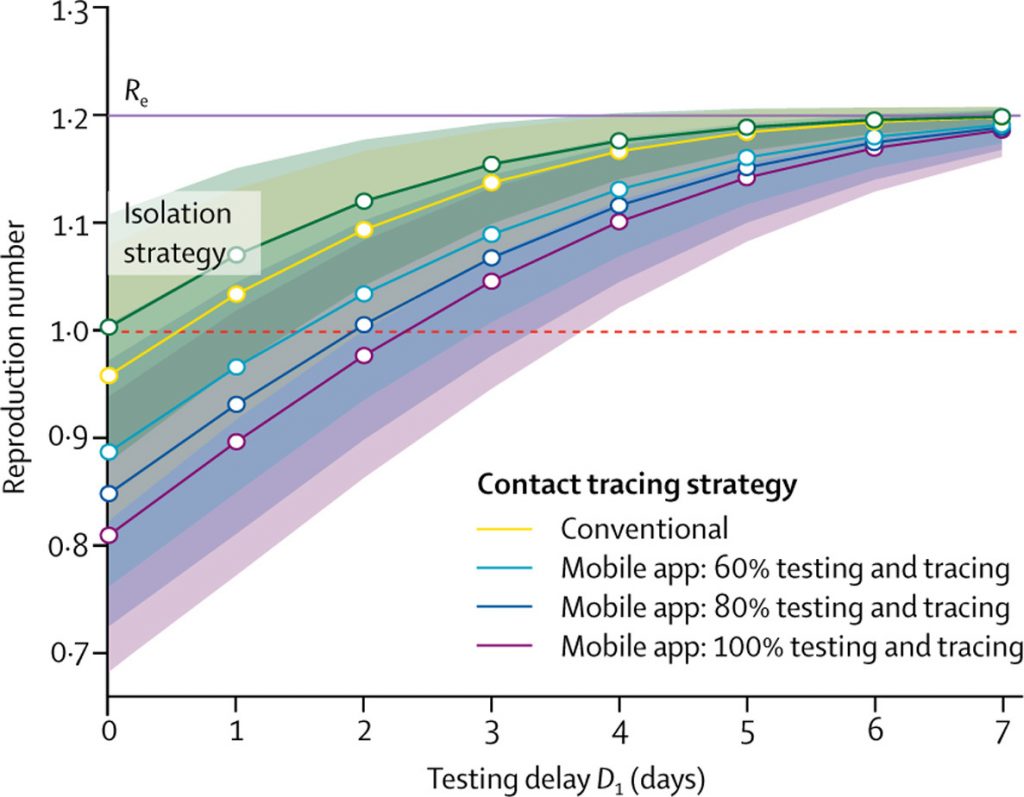A Modeling Study of Mobile App Tracing Strategy’s Effectiveness for COVID-19
Author: Beomhyeok Lee

This study shows the effectiveness of the use of contact tracing strategies for COVID-19 using mobile applications. The stochastic mathematical model is used to predict the transmission rate of COVID-19 in different conditions. This study has significant importance, as the setting of physical distancing measures are easing, and the need to understand how to effectively use the technology available increases.
In this mathematical modeling, the effective reproduction number for COVID-19 is set to be 1 and quantified the contribution of each factor by comparing with the reproduction number below 1. The key factors that determined the contact tracing strategy to be successful were timeliness and completeness of the use of the app and testing. If the use of mobile app contact tracing is used widely among the population in the long-run and the testing delay is minimized, the reduction in onward COVID-19 transmissions is maximized. This suggests that encouraging or providing incentives to the population to use the mobile app contact tracing, as well as making the testing available, is the essential condition to reduce COVID-19 transmission with eased disease control settings.
References:
Figure retrieved from Kretzshmar M. E., Rozhnova G., Bootsma M. C. J et al., Impact of delays on effectiveness of contact tracing strategies for COVID-19: a modeling study. https://doi.org/10.1016/S2468-2667(20)30157-2
Article title: Impact of delays on effectiveness of contract tracing strategies for COVID-19: a modeling study https://www.thelancet.com/article/S2468-2667(20)30157-2/fulltext